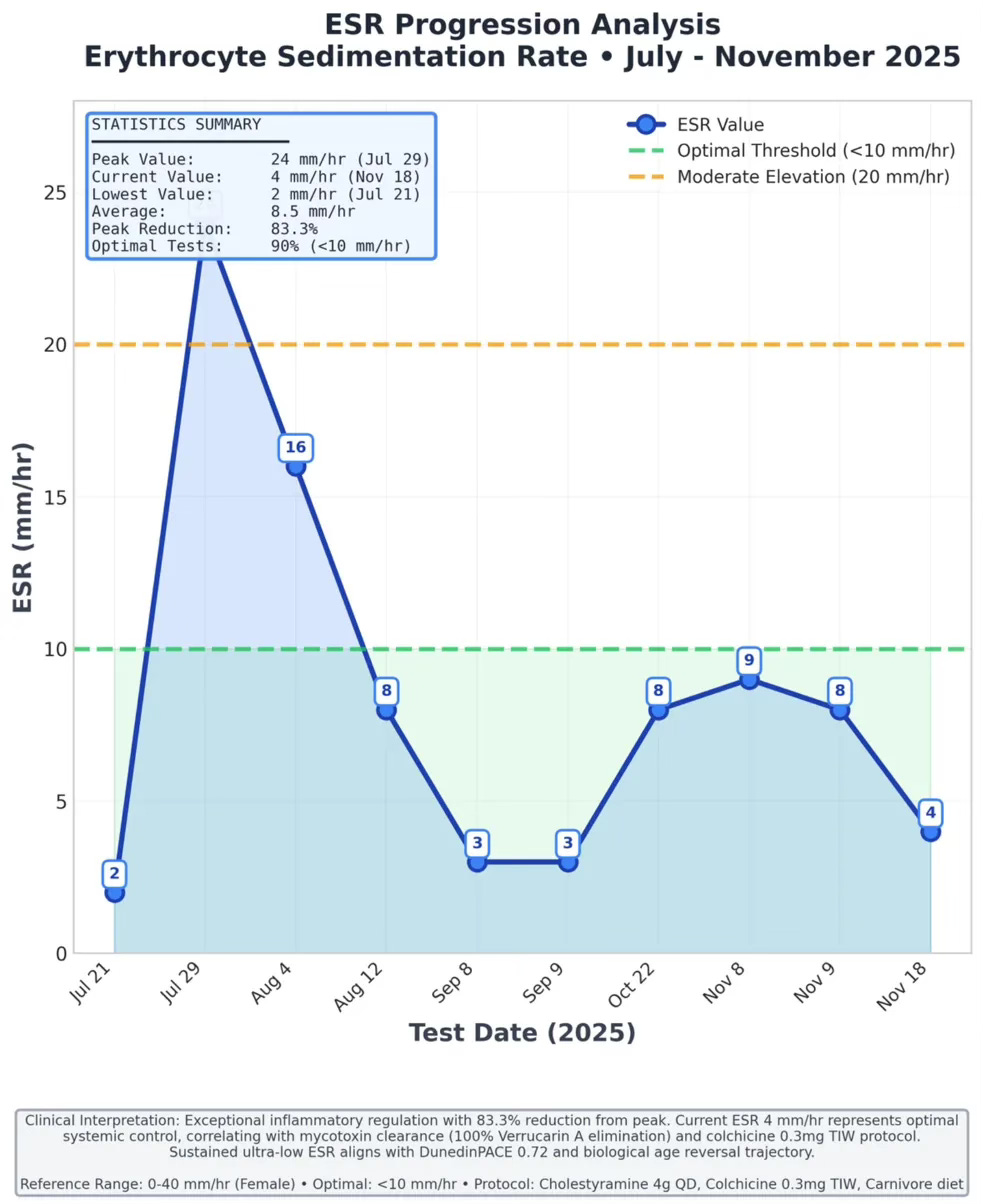ESR: The Inflammation Biomarker You're Not Tracking (But Should Be)
How I Dropped My Systemic Inflammation 83% and Reversed My Biological Age.
Be warned: This is a very long article with a ton of information. Enjoy your reading!
Picture this: You’re standing in your living room, using a device the size of a glucose meter. Ten minutes later, you have a precise measurement of systemic inflammation coursing through your body—the same test that, until recently, required a lab appointment, a phlebotomy needle, and 48 hours of waiting.
In July 2025, that test showed my inflammation at 24 mm/hr—not dangerous, but silently accelerating my biological aging. Four months later? 4 mm/hr. Ultra-optimal. My body is now aging at 72% of the normal rate.
This is the story of ESR (Erythrocyte Sedimentation Rate)—a century-old test that modern medicine has relegated to the diagnostic dustbin, but that biohackers should be obsessing over.
Because unlike most inflammatory markers that give you a vague sense of “inflammation,” ESR provides precise, actionable, trackable data that correlates directly with longevity.
Let me show you why this matters, what affects it, and exactly how I hacked mine.
Keep reading with a 7-day free trial
Subscribe to The Ultimate Guide to Biohacking & Longevity to keep reading this post and get 7 days of free access to the full post archives.


